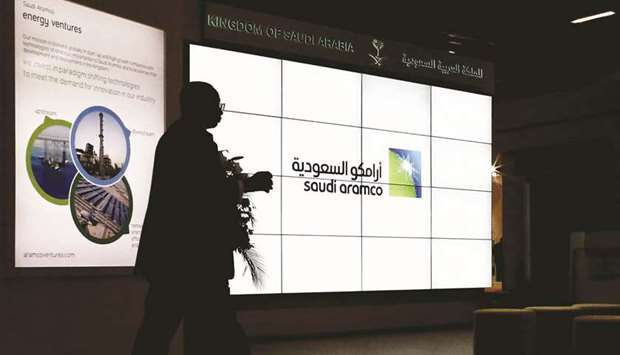But they also illustrate the scale of the challenge Crown Prince Mohammed bin Salman faces to achieve his twin desires - a $2tn valuation in an initial public offering of the state-owned behemoth, plus a generous flow of cash into government coffers to fund a crowded policy agenda.
The financial information reviewed by Bloomberg News revealed huge profits, a pristine balance sheet and world-beating production costs. The figures also show the Saudi Finance Ministry, rather than investors, as the main beneficiary from oil’s rise above $70 a barrel, and it would reap an even greater share of any gains above $100.
There’s one obvious tool Riyadh could use to resolve this issue: Oil prices. Holding off on the IPO until crude is high enough could keep sufficient funds flowing to the government while also polishing up Aramco’s valuation.
“Now it’s a matter of choosing the right time,” Prince Mohammed told Time magazine earlier this month. “We believe oil prices will get higher in this year and also get higher in 2019, so we are trying to pick the right time.”
With Brent crude, the international benchmark, trading above $70, officials from the kingdom are now signalling an ambition for it to rise to $80, according to people familiar with their thinking.
“The Saudis want to extract the highest price they think the market can bear,” said Yasser Elguindi, senior market strategist at Energy Aspects Ltd in New York.
Asked to comment on the figures, Saudi Aramco said in a statement: “This is inaccurate, Saudi Aramco does not comment on speculation regarding its financial performance and fiscal regime.”
Prince Mohammed has made the IPO a key part of his “Vision 2030” plan to ready the kingdom for the post-oil age. It’s an effort defined by soaring aspirations, including the construction of a futuristic mega-city called Neom and a vast solar power project.
The Aramco listing is similarly ambitious, seeking to raise a record $100bn by selling 5% of the company’s shares. That would shatter the previous record - $25bn raised by Chinese internet retailer Alibaba Group Holding Ltd in 2014.
“The Aramco IPO is a cornerstone of the sweeping and ambitious reform effort in Saudi Arabia,” said Helima Croft, global head of commodity strategy at RBC Capital Markets. The money raised in the share sale would also be “imperative” for the process.
Some oil industry executives, consultants and analysts, including Sanford C Bernstein & Co and Rystad Energy, have questioned the $2tn valuation target, suggesting a figure between $1tn and $1.5tn as more realistic.
Even at the low end of that range, Aramco would become the world’s largest company by market value, well ahead of Apple Inc.
Aramco’s financial data give credence to the more cautious view. Institutional investors who used the figures published by Bloomberg in back-of-the-envelope models said the state-owned company could achieve a valuation of $1tn to $1.2tn. That would assume a long-term oil price of about $60 a barrel and use valuation methods similar to other major oil companies. The investors asked not to be named because their estimates weren’t official.
Saudi Arabia depends on Aramco to finance social and military spending, as well as the lavish lifestyles of hundreds of princes. This places a heavy burden on the company’s cash flow - in the form of income tax and royalties.
The importance of oil revenue to the kingdom became clear in late 2014, when crude prices plunged, eventually hitting a 12-year low. The Saudi government struggled to keep the economy running, using more than $250bn of its foreign-exchange reserves and selling billions of dollars in sovereign bonds to balance the budget.
For the first time in decades, Riyadh had to impose budgetary austerity. The salary cuts and subsidy reductions not only sent the economy into recession, they also threatened to weaken the kingdom’s decades-old social contract - generous state handouts to maintain stability in the kingdom.
So far, the Saudi government hasn’t made any changes that would divert significant amounts of cash away from its own coffers in order to boost Aramco’s appeal to foreign investors.
A year ago, the kingdom lowered the company’s income tax rate to 50%, from 85% previously. But the newly published financial information also reveals that Riyadh secretly introduced a new sliding royalty that takes a bigger share of revenue as crude prices rise. The change also broadened the scope of the levy to cover a greater proportion of its sales - limiting any potential gains to IPO investors from an improving global oil market.
No matter what final valuation Aramco achieves, the first look at its books illustrated the tremendous deal the kingdom cut in 1976 to fully nationalise the company. It paid the forerunners of Chevron Corp and Exxon about $1.5bn for their shares.



